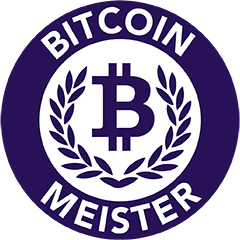The History of Currency Part 2 – Barter
Find the Introduction HERE
The very first form of exchange was Barter:
When we go back to the very beginning of this history, the majority of exchanges were made with Livestock (a great sign of wealth at the time). It is also from this time that we find some words that we still use today:
- “Pecus“: which means ‘Herd‘ in Latin, which is probably the etymology of the word “Pecuniary”. Herd in Sanskrit is called ‘Ropa’ which gives us the word “Rupee”.
- “Caput“: which means ‘Head‘ in Latin, which would be the origin of the word “Capital”.
But quickly this method of Barter poses various problems. How to conclude an exchange when the Livestock cannot be split or fractionated? Or if one of the two parties were not interested or dissatisfied with the objects of the exchange. Therefore, transactions require long negotiations, as each party had to agree on the value of his property.
An ‘Intermediary‘ had to be set up. It will be necessary to wait a few thousand years to use Precious and Rare Metals as Currency.
The basis of the Barter is the exchange of Goods and Services, here is what could be used for the Barter (according to the periods or the regions of the Old World):
Natural Materials
- Stones (more or less precious)
- Salt (Origin of the word ‘Salary’, Salt was paid to the Roman legionaries as remuneration)
- Amber, Jade .
- Small metal ingots (more or less precious)
Products of Agriculture, Harvest and Breeding
- Livestock (mainly Beef, as this animal was the first form of wealth)
- Seeds (wheat, cocoa, pepper, rice, tea, fur …)
Products from the craft industry
- Pagne
- Glasswork
- Knives, axes, choppers …
- Shells (Cauri → One of the longest used means of exchange and payment in terms of ‘Currency’, Cauris will be used until the 20th Century).
- Fabric Blends
- Rings
- Hammered Iron …
The origin of the Currency remains inseparable from Social and Ritual Exchanges.
Let’s look back over the first 7,000 years:
- – 8500: Appearance of Agriculture and Breeding.
- – 3500: Invention of the Wheel, accompanied by the development of means of transport of Goods, but also discovery of the centrifugal force for the craft industry and especially the Mills.
- – 3300: Appearance of Credit and Writing (account entry), destined for accounting. Agriculture and Breeding create surplus, which must be stored and can then be exchanged for other economic actors. It is also at this time that the first Centralized Political Institutions appear.
- – 3000: Appearance of the first large Cities, accelerating sedentarization, the development of land cultivation and the improvement of agricultural techniques. These cities generally had 50,000 inhabitants. They allowed the division of labor: Handicrafts in the cities and Agriculture outside. This was the first great upheaval in economic, social and political relations.

- – 1700: The King of Babylon, Hammurabi establishes 282 Laws: which gives rise to the first “Civil and Commercial Rights“. Applicable only in Babylon and were adapted to the way of life of the Babylonians. These Laws then served as a model for the Scribes, and were copied for nearly 1000 years.
Babylon had also managed to develop a relatively sophisticated banking system, similar to our present banks, but without having a monopoly. It is also they who are at the origin of the creation of Compound Interest (2000 – 1600 BC), Interest on Interest: The interest of each period (Days, Weeks, Months, Years) is added to the Capital base to increase it gradually, this will bring a new interest. This is the opposite of Simple Interest, where the interest is not reinvested. Compound Interest is a long-term perspective. This form of Interest is still used 4000 years later and is especially applied to Cryptocurrencies.
In 1300 B.C., the first form of Currency appeared, suitable for a large number of people and merchants. The ‘Cauri‘, this small shell has the fundamental characteristics of a Currency:
- Solidity
- Manoeuvrability
- Severability.
Cauri is a tangible sign of prosperity and growth. Because of its manoeuvrability, it is easy to transport. It quickly becomes a reliable alternative to the means of barter used in the same period:
- Food is perishable
- Feathers can be attacked by Vermin
The ‘Cauris’ kept their status of ‘Currency’ until the 20th Century.

In the 7th – 5th Century B.C., the first Private Banks, the House of Egibi and the House of Murashu (two Babylonian families with considerable fortunes), make their appearance. These lent loans at interest to all people whose needs were justified.
This first period in the History of the Currency sets up the principle of Barter, exchanges, allows the development of cities, social activities, Politics and Banks.
The following period accentuates the development of the Currency and the Minting of it. The first Crises, Wars, Corruptions, Monetary Manipulations, but also new innovations which open the door to exchanges between countries and continents. It’s the birth of Globalization.
The success of the Currency lies in the confidence that people have in this system and in the economy.
To be continued…
See you soon
Christophe WILHELM
© Bitcoin Meister

Post Comment
You must be logged in to post a comment.